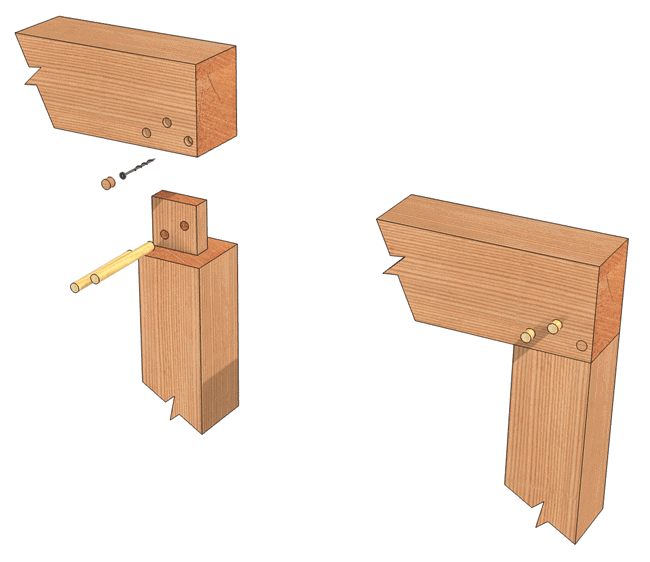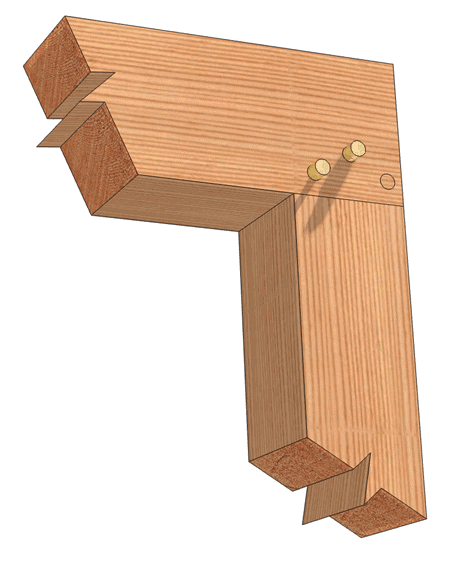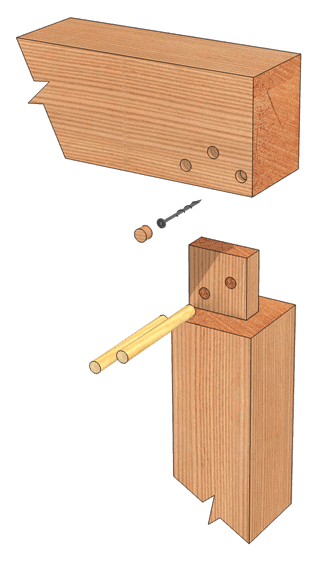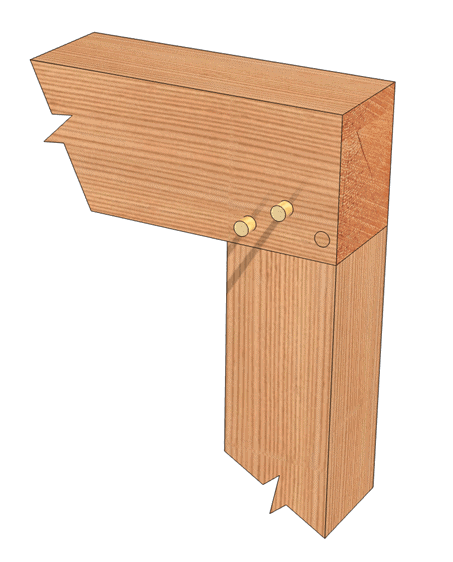
This example illustrates a very common assembly in timber framing. That is when a post connects to a tie beam (a horizontal beam, perpendicular to the ridge, that resists the spreading force of the roof onto the walls) or a plate (the horizontal beam parallel with the ridge that ties the tops of the bents together). Cases such as this occur at the outside of the frame. The horizontal element ends at the outside of the post.
As in every other case in traditional timber framing, a mortise and tenon joint unites the two timbers. The end of the post is reduced in section to form the tenon (sometimes called a tongue). This is inserted into the cavity in the face of the beam or plate. This cavity is called the mortise. Hardwood pegs are inserted into holes drilled into both the mortise and the tenon. These pegs hold the joint firmly in place.
In this example, since the joint is very close to the end of the horizontal timber, there could be a tendency for the wood to split. So a structural screw is inserted to resist that splitting, and is concealed with a plug that looks very similar to the hardwood pegs.




Another option to accomplish the same desired effect of preventing splitting is to drill the “Binding Hole” through the timber and coat the “Peg” with TiteBond III Ultimate Wood Glue or Epoxy.
Never heard of that James, great alternative. Thanks for sharing that!
Great that you posted this, thanks. I just cut 4 of these this week for a workshop frame. Design and cut as I went, no formal drawings. Didn’t know this was an historical joint and very happy to learn tips about the fix to prevent splitting.